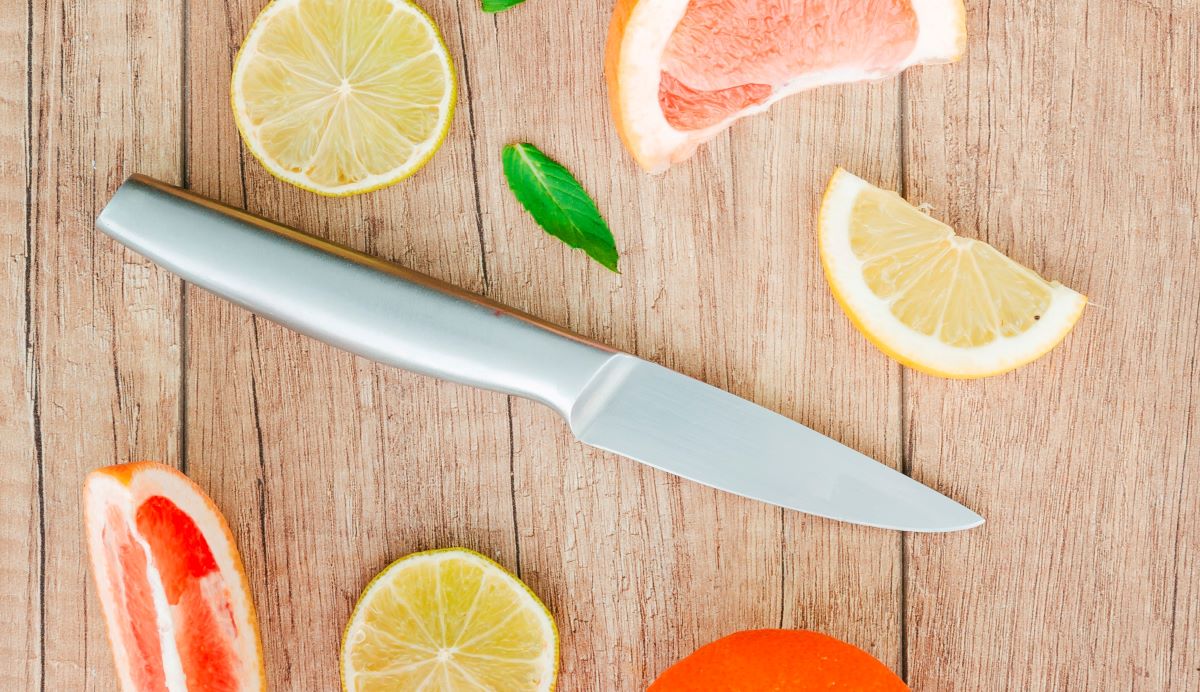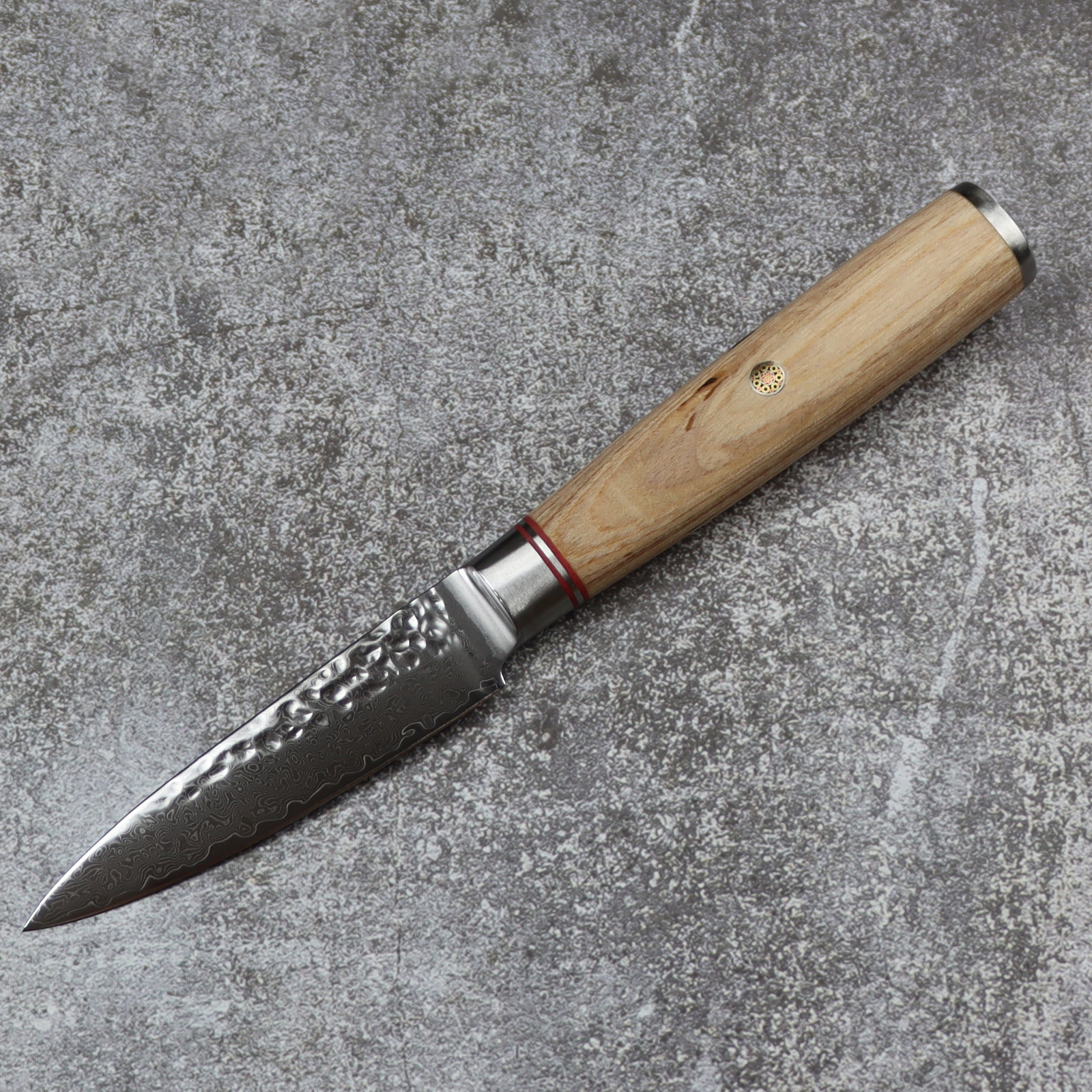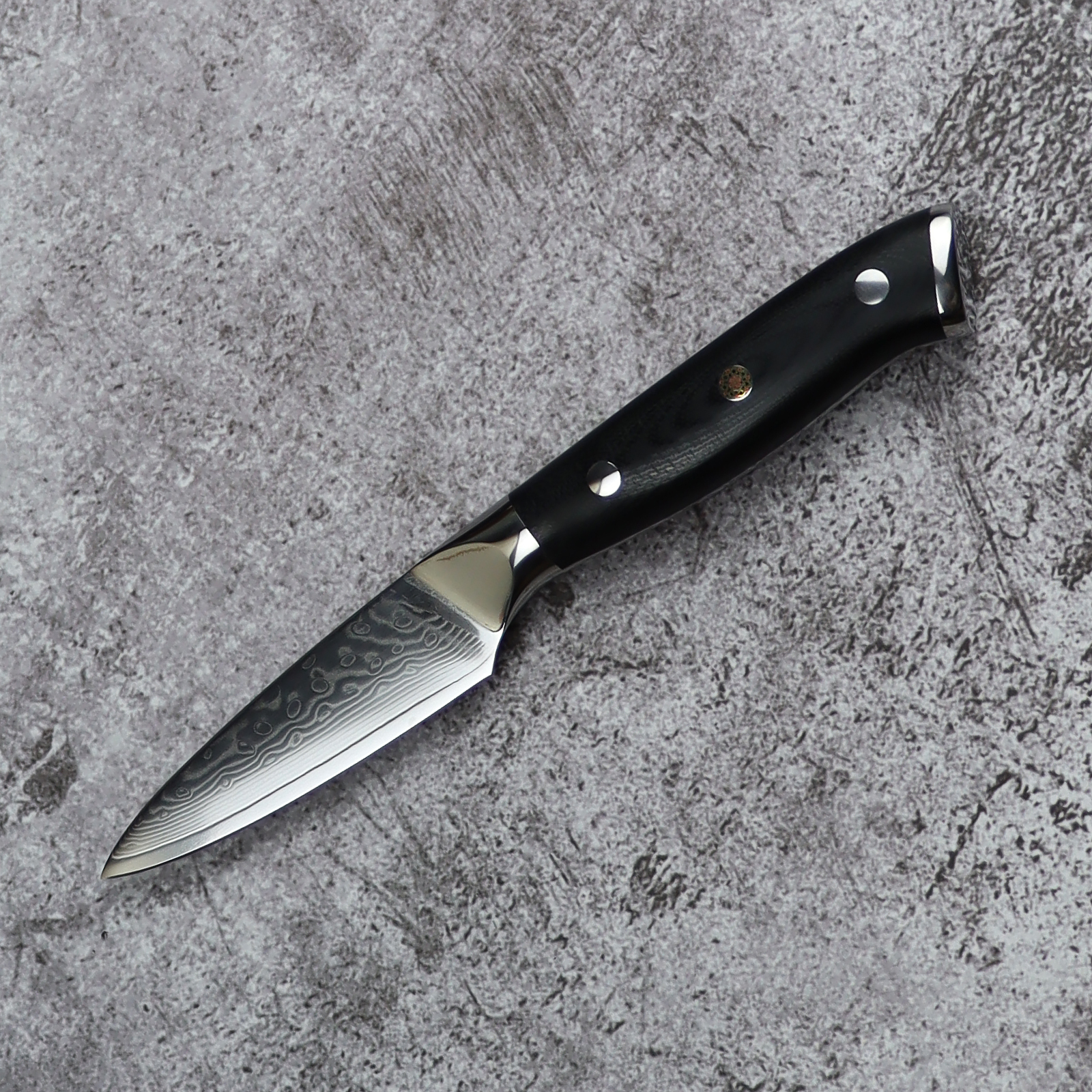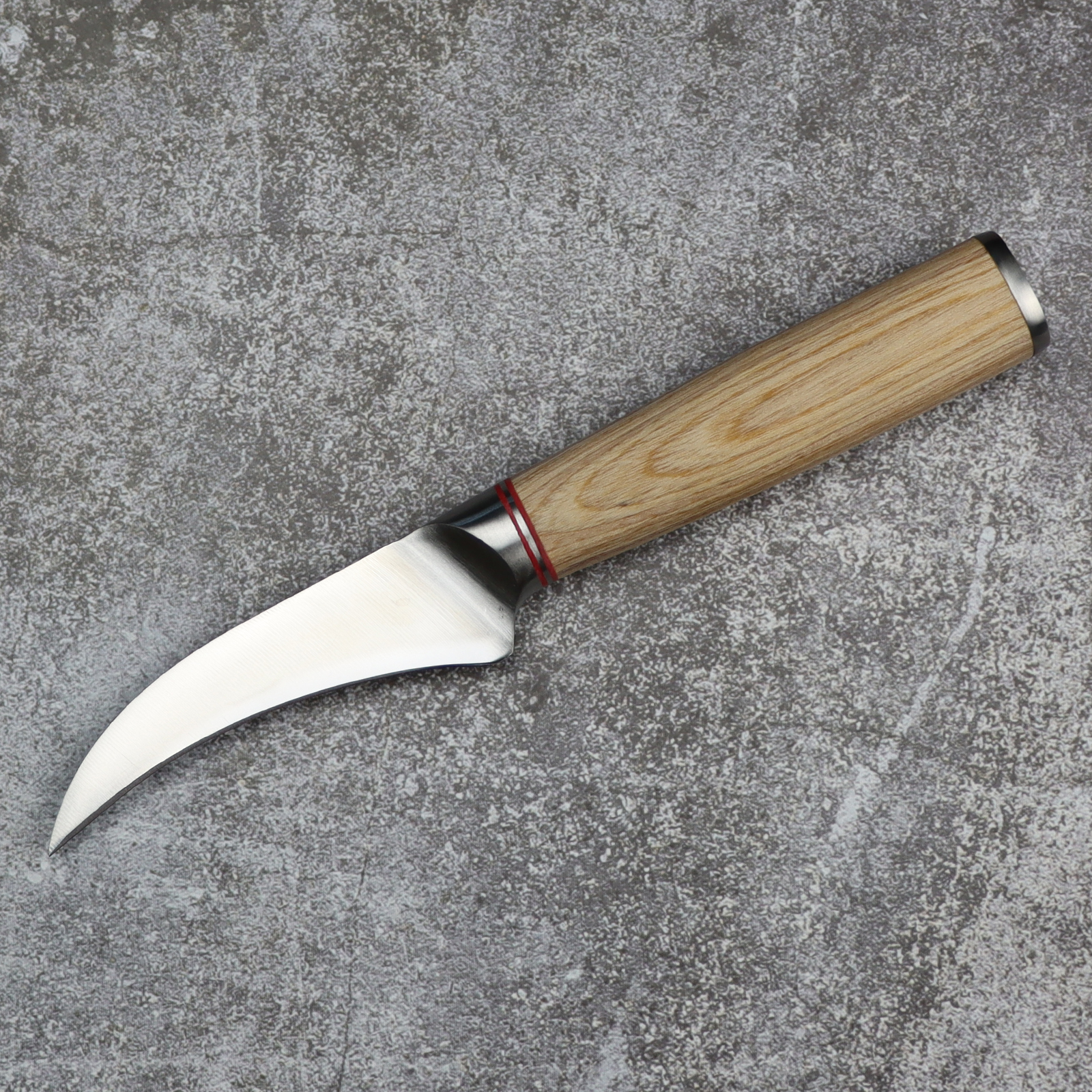The Best Paring Knives of 2024
Mar 04,2023 | Fzkaly
When it comes to paring knives, the options are endless. These small but mighty kitchen tools are designed specifically for precision cutting, making them the perfect addition to any chef's arsenal. But with so many options on the market, how do you choose the best paring knife for your needs? Keep reading to see which paring knife is above the rest and we will provide you with all the information you need to make an informed decision. Whether you're a seasoned chef or a beginner in the kitchen, a good paring knife is an essential tool for any cook looking to elevate their culinary creations. So let's dive in and present you with the best paring knives on the market.

What is a Paring Knife Used For?
A paring knife is a small, versatile knife that is used for a wide range of tasks, such as peeling and slicing fruits and vegetables, trimming meats, and other delicate cutting tasks. Here are some specific uses for a paring knife.
Peeling and Trimming
- Peeling the skin off of fruits and vegetables, such as potatoes, carrots, and apples.
- Removing the stems and cores of fruits and vegetables.
- Trimming fat and other unwanted parts from meats, such as chicken or beef.
Slicing and Cutting
- Slicing small fruits and vegetables, such as strawberries or cherry tomatoes.
- Cutting and segmenting citrus fruits, such as oranges or lemons.
- Slicing cheese or deli meats for sandwiches.
- Cutting small pastry or dough shapes for baking.
Detail Work
- Carving and shaping small details on fruits and vegetables, such as carving garnishes for cocktails or special meals.
- Removing the seeds and veins from chili peppers or jalapeños.
- Removing the skin and bones from fish or poultry.
Other Uses
- Opening clam shells or oysters.
- Removing the rind from hard cheeses, such as parmesan.
- Creating decorative cuts on fruits or vegetables for presentation purposes.
- Scoring meat or fish to help with even cooking.
Types of Paring Knives
Paring knives come in many different styles and sizes, each designed for a specific purpose. Next, we will discuss the various types of paring knives and their uses.
Standard Paring Knife

The standard paring knife is the most common type of paring knife. It typically has a 3 to 4-inch blade that tapers to a point. This knife is ideal for peeling and trimming fruits and vegetables, and other small tasks in the kitchen.
Bird's Beak Paring Knife

The bird's beak paring knife, also known as a tourne knife, has a curved blade that resembles the shape of a bird's beak. This knife is ideal for peeling round fruits and vegetables, such as apples and potatoes. The curved blade allows for more precise cutting and peeling.
Sheep's Foot Paring Knife
The sheep's foot paring knife has a straight blade that curves upward at the end. This knife is ideal for peeling fruits and vegetables, as well as for trimming and shaping meats. The curved end allows for more control when cutting and shaping.
Spear Point Paring Knife
The spear point paring knife has a sharp, pointed blade that is ideal for precision cutting and peeling. This knife is commonly used for removing the skin from fruits and vegetables, as well as for cutting small garnishes and decorations.
Serrated Paring Knife

The serrated paring knife has a blade that is similar to a bread knife, with small serrations along the edge. It is typically 3-4 inches long and is used for slicing soft fruits such as tomatoes and peaches, as well as bread and pastries.
What is the Best Paring Knife in 2024?
1. Wood Handle Paring Knife 3.5"
The Fzkaly wood handle paring knife is a classic kitchen essential that every home cook should own. The blade is made from high-quality stainless steel, which is durable and rust-resistant. The knife features a comfortable wooden handle that provides a good grip and balance, allowing for precise cuts and easy maneuvering. The blade is sharp and retains its edge even after repeated use, making it perfect for tasks like peeling, slicing, and trimming fruits and vegetables.
Pros:
- Durable and rust-resistant Damascus steel blade
- Comfortable wooden handle for good grip and balance
- Retains sharp edge even after repeated use
- Suitable for a variety of tasks like peeling, slicing, and trimming
Cons:
- Not dishwasher safe
- Moisture and heat can affect the wooden handle
Price: $59.99
2. Japanese Paring Knife 3.5"
The Fzkaly Japanese paring knife is a beautiful and functional tool that is perfect for delicate tasks in the kitchen. The blade is made from high-quality Japanese VG10 stainless steel, which is sharp and durable. The knife features a comfortable ebony handle that is designed to fit the contours of your hand, providing a secure and comfortable grip. The blade is thin and flexible, allowing for precise cuts and easy maneuvering, making it perfect for tasks like peeling, trimming, and carving.
Pros:
- Sleek and stylish design
- Premium Japanese stainless steel blade
- Lightweight and easy to maneuver
Cons:
- Requires extra care and maintenance to keep blade sharp
- Not dishwasher safe
Price: $75
3. Damascus Paring Knife 3.5"
The Fzkaly 3.5" Damascus paring knife is a beautiful and functional addition to any kitchen. The blade features a stunning Damascus pattern, which is created by folding and hammering layers of steel to create a unique and durable blade.
The 3.5-inch blade is incredibly sharp and precise, making it perfect for peeling, trimming, and slicing fruits and vegetables. The handle is made of G10, which is ergonomically designed for a comfortable and ambidextrous hold. Full tang structure with triple rivets built-in balance each knife and give superb robustness & quality.
Pros:
- Premium 67 layers Damascus steel blade
- Hold a sharp edge for longer periods of time
- Highly resistant to corrosion and rust
Cons:
More expensive than ordinary stainless steel paring knife
Price: $59.99
What to Look for When Buying a Paring Knife?
If you're in the market for a paring knife, it's important to choose one that fits your needs and preferences. Here are some things to look for when buying a paring knife:
The Handle
One of the most important things to consider when buying a paring knife is the handle. The handle should be comfortable to grip and provide a secure, non-slip hold. Here are some things to look for in a paring knife handle:
Comfort: The handle should feel comfortable in your hand, with a shape and texture that allows for a secure grip.
Material: Look for a handle material that is durable, easy to clean, and resistant to moisture and bacteria. Popular handle materials include wood, plastic, and synthetic materials like G-10 and Micarta.
Size: The handle should be the right size for your hand, with a length and thickness that allows for comfortable and easy maneuvering.
The Blade
The blade is another important consideration when choosing a paring knife. The blade should be sharp, durable, and designed to handle a variety of tasks. Here are some things to look for in a paring knife blade:
Sharpness: Look for a blade that is sharp and can hold its edge over time. High-quality paring knives are often made with premium materials, such as high-carbon steel, which can hold a sharp edge for longer.
Length: Paring knife blades typically range in length from 2.5 inches to 4 inches. Choose a length that suits your needs and the tasks you will be using the knife for.
Blade Shape: The shape of the blade can impact the knife's versatility and usefulness. Straight blades are ideal for slicing, while curved blades are better suited for tasks like peeling and trimming.
Price
Paring knives can range in price from budget-friendly to high-end. Choose a knife that fits your budget while still meeting your needs for quality and performance.
Customer Service
Customer service is important when buying a paring knife because it can help you make an informed decision and ensure that you are satisfied with your purchase. Good customer service can provide you with helpful information about the different types of paring knives available, their features, and their intended uses.
Additionally, if you experience any issues with your paring knife after purchase, such as a defect or a need for sharpening, good customer service can help you resolve the issue in a timely and satisfactory manner.
Choosing the right paring knife can make a big difference in your cooking experience. By considering the handle, blade, price and customer service, you can find a paring knife that is comfortable to use, versatile, and durable.
How to Care for and Maintain Paring Knives?
Proper care and maintenance are essential for ensuring that your paring knife remains sharp, safe, and in good condition over time. Here are 10 tips for caring and maintaining paring knives:
1. Hand wash the knife immediately after use with warm soapy water and dry it thoroughly. Avoid leaving the paring knife soaking in water or putting it in the dishwasher, as this can damage the blade and handle.
2. Use a honing steel to maintain the sharpness of the blade, ideally before each use. This will help realign the edge of the blade and prevent it from becoming dull.
3. Sharpen the paring knife regularly using a sharpening stone or electric knife sharpener to maintain its sharpness.
4. Store the knife in a knife block or on a magnetic strip to protect the blade and prevent it from coming into contact with other utensils that could damage it.
5. Keep the knife away from acidic foods, as they can cause the blade to rust or corrode. If the blade does come into contact with acidic foods, rinse it immediately and dry it thoroughly.
6. Use a cutting board made of wood, bamboo or plastic, rather than glass or metal, which can dull the blade.
7. Avoid using the knife to cut hard foods, such as bones or frozen foods, which can damage the blade.
8. Use the knife only for its intended purpose, such as peeling or slicing, and avoid using it as a screwdriver or bottle opener.
9. Apply a small amount of mineral oil or food-grade oil to the handle and blade to prevent rust and corrosion.
10. If the knife becomes damaged or dull, seek professional sharpening or repair services to restore its performance and prolong its lifespan.


_1080x.jpeg?w=1000&h=1000)



